!! I'm moving to another blog at panticwritten.tumblr.com!
Don't wanna be here? Send us removal request.
Text
I hate to ask but im running out of school loans and we just had a sudden ignition issue with our car, which will be an unexpected expenditure once we get an estimate on fixing it. Christmas is coming up and it’s going to be super tight this year. If you can spare a few dollars, id appreciate it!
My paypal is [email protected]
Thank you.
166 notes
·
View notes
Text
Hey! This blog (panticwriters) will be at a new location here! It’ll be a while before I actually start posting there, since I’m still working on the formatting, but it’s the new place to be. It’ll be a lot more organized than this blog has been.
Ugh I’m revamping my other blogs. I hate them being side blogs because I want to have a separate dash for each of them. Gonna slowly make new main blogs for each of them. I dunno if it’s gonna work so I’ll keep the side blogs in existence in case I want to go back, but we’ll see.
10 notes
·
View notes
Text
The Excessively Detailed Headcanon Tumblr Meme
Send me some numbers and a character name and I will tell you:
What does their bedroom look like?
Do they have any daily rituals?
Do they exercise, and if so, what do they do? How often?
What would they do if they needed to make dinner but the kitchen was busy?
Cleanliness habits (personal, workspace, etc.)
Eating habits and sample daily menu
Favorite way to waste time and feelings surrounding wasting time
Favorite indulgence and feelings surrounding indulging
Makeup?
Neuroses? Do they recognize them as such?
Intellectual pursuits?
Favorite book genre?
Sexual Orientation? And, regardless of own orientation, thoughts on sexual orientation in general?
Physical abnormalities? (Both visible and not, including injuries/disabilities, long-term illnesses, food-intolerances, etc.)
Biggest and smallest short term goal?
Biggest and smallest long term goal?
Preferred mode of dress and rituals surrounding dress
Favorite beverage?
What do they think about before falling asleep at night?
Childhood illnesses? Any interesting stories behind them?
Turn-ons? Turn-offs?
Given a blank piece of paper, a pencil, and nothing to do, what would happen?
How organized are they? How does this organization/disorganization manifest in their everyday life?
Is there one subject of study that they excel at? Or do they even care about intellectual pursuits at all?
How do they see themselves 5 years from today?
Do they have any plans for the future? Any contingency plans if things don’t workout?
What is their biggest regret?
Who do they see as their best friend? Their worst enemy?
Reaction to sudden extrapersonal disaster (eg The house is on fire! What do they do?)
Reaction to sudden intrapersonal disaster (eg close family member suddenly dies)
Most prized possession?
Thoughts on material possessions in general?
Concept of home and family?
Thoughts on privacy? (Are they a private person, or are they prone to ‘TMI’?)
What activities do they enjoy, but consider to be a waste of time?
What makes them feel guilty?
Are they more analytical or more emotional in their decision-making?
Would they consider themselves a Type A or Type B personality?
What recharges them when they’re feeling drained?
Would you say that they have a superiority-complex? Inferiority-complex? Neither?
How misanthropic are they?
Hobbies?
How far did they get in formal education? What are their views on formal education vs self-education?
Religion?
Superstitions or views on the occult?
Do they express their thoughts through words or deeds?
If they were to fall in love, who (or what) is their ideal?
How do they express love?
If this person were to get into a fist fight, what is their fighting style like?
Is this person afraid of dying? Why or why not?
24K notes
·
View notes
Text
Watch as I finish a daydream writing project in November even though I’m not participating in NaNoWriMo.
#I've been working on this since Feb 2016#breaking furnace#i have prob two? three? chapters left#maybe four#im screaming im ready to be done#maddart
0 notes
Text
child handling for the childless nurse
My current job has me working with children, which is kind of a weird shock after years in environments where a “young” patient is 40 years old. Here’s my impressions so far:
Birth - 1 year: Essentially a small cute animal. Handle accordingly; gently and affectionately, but relying heavily on the caregivers and with no real expectation of cooperation.
Age 1 - 2: Hates you. Hates you so much. You can smile, you can coo, you can attempt to soothe; they hate you anyway, because you’re a stranger and you’re scary and you’re touching them. There’s no winning this so just get it over with as quickly and non-traumatically as possible.
Age 3 - 5: Nervous around medical things, but possible to soothe. Easily upset, but also easily distracted from the thing that upset them. Smartphone cartoons and “who wants a sticker?!!?!?” are key management techniques.
Age 6 - 10: Really cool, actually. I did not realize kids were this cool. Around this age they tend to be fairly outgoing, and super curious and eager to learn. Absolutely do not babytalk; instead, flatter them with how grown-up they are, teach them some Fun Gross Medical Facts, and introduce potentially frightening experiences with “hey, you want to see something really cool?”
Age 11 - 14: Extremely variable. Can be very childish or very mature, or rapidly switch from one mode to the other. At this point you can almost treat them as an adult, just… a really sensitive and unpredictable adult. Do not, under any circumstances, offer stickers. (But they might grab one out of the bin anyway.)
Age 15 - 18: Basically an adult with severely limited life experience. Treat as an adult who needs a little extra education with their care. Keep parents out of the room as much as possible, unless the kid wants them there. At this point you can go ahead and offer stickers again, because they’ll probably think it’s funny. And they’ll want one. Deep down, everyone wants a sticker.
282K notes
·
View notes
Photo




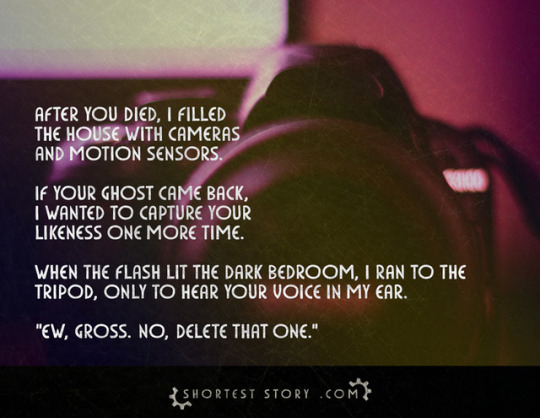


Happy Halloween! To celebrate, I’ve dumped 15 of my favourite mini horror short stories on Imgur, including unreleased material that’s not supposed to come out for a couple months. Here are 7 stories from that set! The rest are here: https://imgur.com/gallery/dUkk6
3K notes
·
View notes
Text
We played the fanfiction trope version of “fuck marry kill” in which the options are “slow burn/fake date/enemies to lovers” and it’s been like 30 hours and I’m STILL losing it over the concept of fake-dating Saruman the White.
104K notes
·
View notes
Text
Q&A: Shooting Strung Up Humans Is An Ineffective Training Method
Until what age would a responsible adult wait to give a kid real bullets to shoot? The kid is training to be an elite assassin/met/hitman and begins target practice at age 5 with nonlethal laser guns that mark where on the target they hit and are gradually introduced to recoil to prepare them for real guns. Not long after switching to real bullets, they switch to living targets (the organization training them buys people who have been sentenced to death and uses them as targets).
Stringing people up for target practice and putting bullets in them is a pointless exercise, especially with children. It won’t make them better at killing people, or less likely to hesitate. All you get is a shattered psyche and a nervous breakdown not long after they reach adulthood. That, or they’ll be a sociopath and lack the necessary emotions to be good at the social engineering. Unlike the fantasy sociopath, the real life sociopath has a great deal of trouble functioning when among neurotypical people. If a child soldier was your end goal then this method will work great, and they’ll be broken by the time they’re twenty. That’s a lot of effort to put into someone just to break them before they make their first kill as a working assassin.
This is probably the best advice on assassins you’re ever going to get, so it’s best to internalize it:
Assassination is one percent shooting, ninty-nine percent preparation: anticipating moves, devising approaches, recruiting sources, finding the perfect opportunity so the bullet’s almost an after-thought. Usually that’s when a target’s on the move, when there are too many variables to control them all… There are ways to lessen the risk: an armed escort, taking an unpredictable route to your destination, having back-up in a trail car. But ultimately, as long as the assassin knows where you’re going, they have the upper hand. – Burn Notice, “False Flag”
When it comes to writing children and their training, the trick is understanding they’re children. Unless you want to have an “elite” assassin who is a “one and done”, their teacher must be very careful with the pace.
The point of an assassin is not to be good at fighting. They are good, but that’s an extra component. Assassins are covert-ops, and they function like spies. The difference is in their end goal, but they aren’t like a regular soldier or even special forces. If you’re going to structure their training then it isn’t about killing off their emotions or making it easier for them not to hesitate. You’ll get that recruiting young adults from rough backgrounds and broken homes. What you need with an assassin is preparation and, like with Batman, that prep work is what elevates them to elite.
Assassins use people the same way spies do, they assume false identities, they make contacts, create assets, observe the situation, scout locations, all in order to find the best way to their target. They don’t just sit in a watch tower waiting. They’ve got to learn about the person they’re going to kill. This includes their schedule, and where to find them. They need to plan their method of attack. They might walk into the target’s house when they’re not there or even when they’re sleeping, hack their computer, stand over their kids in the middle of the night, look through family photos, steal their datebook, stalk them on social media via some internet cafe, and go through their trash.
Whatever helps them figure out how to make the kill, and pass the blame off on some other poor schmuck in the target’s life.
They need to be able to use their emotions, learn how to turn them on, learn to shut them off, and distance themselves from what they’re doing. They are actors. They need empathy, they need compassion, they need to understand their emotions so they can manipulate others. This can’t be forcibly taught by asking them to shoot people strung up for target practice. That teaches all the wrong lessons.
A basic rule of covert ops, is let someone else do your dirty work. Let someone else find the guy you want to kill. It’s a great technique… as long as you’re not the someone else. – Burn Notice, “False Flag”
If you’re going to train kids to be assassins, then combat training comprises about 25% or less of what they need to be learning. The ancient order of Assassins, from where we get the term, were for the most part what we’ll call “one and done”. The expectation was they’d die in the attempt to kill their target or afterward, which is exactly what happens with most assassins. They may make their kill, but they’re going to die on the way out. This is why the preparation component is so important. Beyond just making the kill, the assassin must have an exit strategy.
When working with individuals who begin as children and whom you plan to keep using, you need to ensure they’ll be functional adults at the end of their training. This is why starting with adults is generally preferable. They’re fully developed, they have the ability to make choices, it takes less time to train them, and you can push them a lot harder. With kids, one must go slowly. We’re talking a time investment of nearly two decades per assassin.
Focusing on your would be assassins killing people in order to kill off their feelings is nice and sexy, but that’s not great for long term health or sanity. If you’re going to spend lots of time developing assassins, you want them to keep working for at least a decade rather than burning out or having a mental breakdown to compromise your organization.
Most kids in this situation don’t get to do any murdering until the final test. This is the first of two, usually. One test happens in a controlled environment and then when they succeed, they get sent out in the world with their first contract.
Depending on the motives and methods of the Organization, that first kill will be them killing a comrade they trained with (the way of true sadists is with their roommate) or running down some person provided for them by their trainers. Or, both.
The first contract happens under the supervision of another more experienced assassin (or two), who will take over if the new assassin proves unable to finish the job. If they succeed at that, they may then serve as an apprentice to this other assassin for the duration of their apprenticeship and learn about functioning in the real world from them. This is the culmination of their training though, and they’ll be somewhere around sixteen to eighteen by the time these events occur.
Children need to be given the opportunity to grow up before they’re put on the fast track to killing. Children are still developing as people, both their minds and their bodies. You can’t force them to do anything. You encourage them with rewards. You push their bodies and their minds, develop their self esteem, provide breaks in their physical training with the education they’ll need to be able to pass themselves off as an actual human being. This education is going to comprise most of their training and act as a way to give their young still developing bodies necessary relief time. For extra motivation and fun, you provide them with games like you would any other child.
These games are going to be structured training, putting them in a controlled environment where they learn and practice their new skills while having fun. One example is Viking children throwing spears back and forth as a childhood game, which graduated to them catching Roman javelins as adults and throwing them back. There are plenty of games we have today from tag to capture the flag that will work when training children and adults.
Fifteen to twenty years of training is a long time, the purpose of a prolonged training period is not to break your trainees by moving too fast. Instead, you want to push them so they are slowly breaking past their internalized physical and mental limits. When you’ve got a character pushing themselves past what they believe is possible, tapping into their desperation, anger, fear, to force themselves beyond their physical exhaustion then you’re at the more advanced methods of martial training. This is the extreme end purpose behind conditioning like running, sit ups, push ups, etc. This is not just to build up your body, but also your mind. Conditioning teaches us how to work through our exhaustion, when we’re tired and want to quit, and find the fortitude within ourselves to keep putting one foot in front of the other. How to find that last spurt of energy, even when we believe there’s nothing left.
You can’t start a child in extreme training, especially since this extreme training isn’t a learning component. This is a pushing component. You can build them toward it, but you need to train them up first. Training them in the physical techniques and all the boring stuff which goes with it. You also need to include the necessary spy school stuff such as infiltration, surveillance, pickpocketing, breaking and entering, chemistry, general education skills like reading, writing, arithmetic, languages, politics, etc, all while slowly pushing them harder bit by bit beyond where they’re comfortable.
You can teach a kid how to make poisons, for example, without actually hurting their mental development. There was a ninjutsu master who talked about how when he was a child, his father would take him around to houses in the neighborhood while the owners weren’t home and he’d have to break in. (Also go through their things, memorize the original positions, and then put the objects back exactly as found.) Supervised at all times, of course, but this is also something you can do with a child that won’t cripple their emotional development.
Even when they do reach the point when they’re ready to make a kill, a responsible/clever organization or handler is going to be there to support them through it which further binds the trainee to their trainers. These children are valuable, and they know it.
Guns will comprise a (comparatively) small part of their training. They don’t take that long to learn how to use. We’re talking a couple months here at most, and after that its just drilling.
You can give kids real bullets at almost any age, so long as they’re not shooting another human being. You want them on the gun range and under supervision with an adult who knows what they’re doing. There are plenty of parents who train their kids kids to shoot, either for hunting or for other reasons. The trick is understanding the supervision component. This is going to be the same in any martial system where children are given live weapons to handle. Supervised at all times is what a responsible adult does, and drilling weapon safety as the first lesson before they ever learn to point and shoot.
Again, killing is potentially damaging to the human psyche at any age, even when we know that the person who is being killed is objectively “bad”, an enemy, or we feel they deserved it. Some people genuinely are fine with it, others aren’t. The difference is in the individual, however these people are all adults. An adult can rationalize killing, they can understand it, and they can make peace with it. A child can’t.
The biggest mistake in fiction is treating children as little adults. Children lack an understanding of permanent consequences, and they cannot rationalize in death in the same way an adult can. They lack the tools to process these complex emotions because their brains are still developing. You can’t treat them like adults because they’re not, and if you do you’ll break them. A broken child or broken adult is too unstable to be a good assassin, much less an elite one.
Even then, killing a “bad person” who “deserves it” is the wrong motivation for an assassin. Assassins kill for money, they kill for country, or they kill because they’re told to. You can get the rogue assassin who has turned on their organization and is seeking redemption as a vigilante, killing the people they think are bad. Still, that’s not how most assassins function and certainly not the ones who survive for extended periods. The organization might hold to some higher principles, but at the end of the day their killing has nothing to do with a moral good. Righteousness from a world of black and white will break someone who must function in shades of gray.
An assassin needs to be able to make the choice of who will die. They must decide how they will die, and if anyone outside of the contract they’ve been given must die. They have to do a lot of groundwork before they ever fire a bullet. They may need to do unsavory things like arrange a kidnapping, or murder the spouse or children of some target’s family. They may be hired to target children. Their job is to identify and create the situation where they can make their kill.
Learning to accept that part of who they are can be difficult if the writer is looking for a way to morally justify their behavior or excuse it. Assassins are, at the end of the day, like every other hired gun.
They’re a hired gun.
Assassin is a nice way to phrase it, but they’re just mercenaries skilled at targeted killing and social engineering. That’s what these kids are in training to be: killers for hire.
-Michi
This blog is supported through Patreon. If you enjoy our content, please consider becoming a Patron. Every contribution helps keep us online, and writing. If you already are a Patron, thank you.
Q&A: Shooting Strung Up Humans Is An Ineffective Training Method was originally published on How to Fight Write.
2K notes
·
View notes
Photo

This week: Form follows function! You can tell a lot about a bird by its wings.
159K notes
·
View notes
Text
Writers,
No matter where you are in your writing process, no matter how difficult, or stressful or impossible it seems, remember…
Your favourite author has been there.
8K notes
·
View notes
Photo

Glitch Effect Tutorial by =Kawiko
54K notes
·
View notes
Note
I'm kinda ashamed to ask this, but could you make a tutorial on how to draw hands? ;A;
omg dont be ashamed at all!! Hands are generally tough to get used to, lots of artists struggle with it! so dont be ashamed i feel you.
and I actually have made a hand anatomy guide before in fact! If you want to get better at drawing hands I def recommend you learn the basic anatomy first. Please check out the ones I made, I try to make it simple and easy to understand:
Artistic Anatomy: Hands Part 1
Artistic Anatomy: Hands Part 2
There’s my guide to the anatomy, but here’s some more tips that I’ve noted to myself that I’d like to include

First off, I’d like to just note on the fingers: if you pay close attention to your own hand, you may notice the fingers are ever ever so slightly curved inward. It’s a very subtle detail, but I noticed that, despite how slight it is, it can make a hand look more lively, and less stiff.
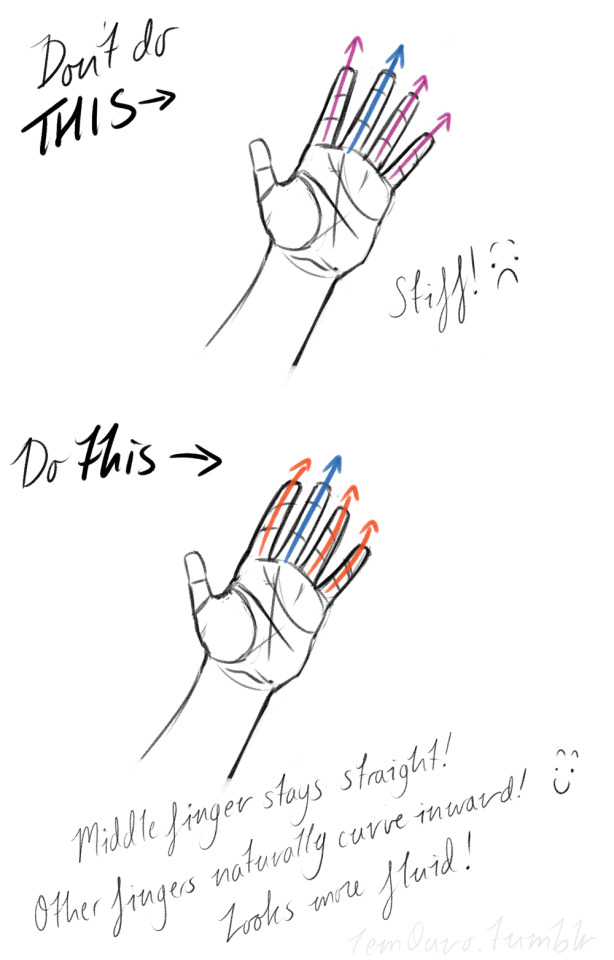
Second, the “M” on the palm! Your hand moves in many ways, and because it does it creates creases in your hand. The most prominent creases appear to make an M shape; this is handy to remember for what I’m going to talk about next. (It also could be a “W” I guess, or to be more specific a “ )X( “; just think of it in whatever way helps you remember!)

SO now that you see the M, draw your hand as a basic blocked shape and add your details. As you do, you can see that the M divides the palm into four basic parts!
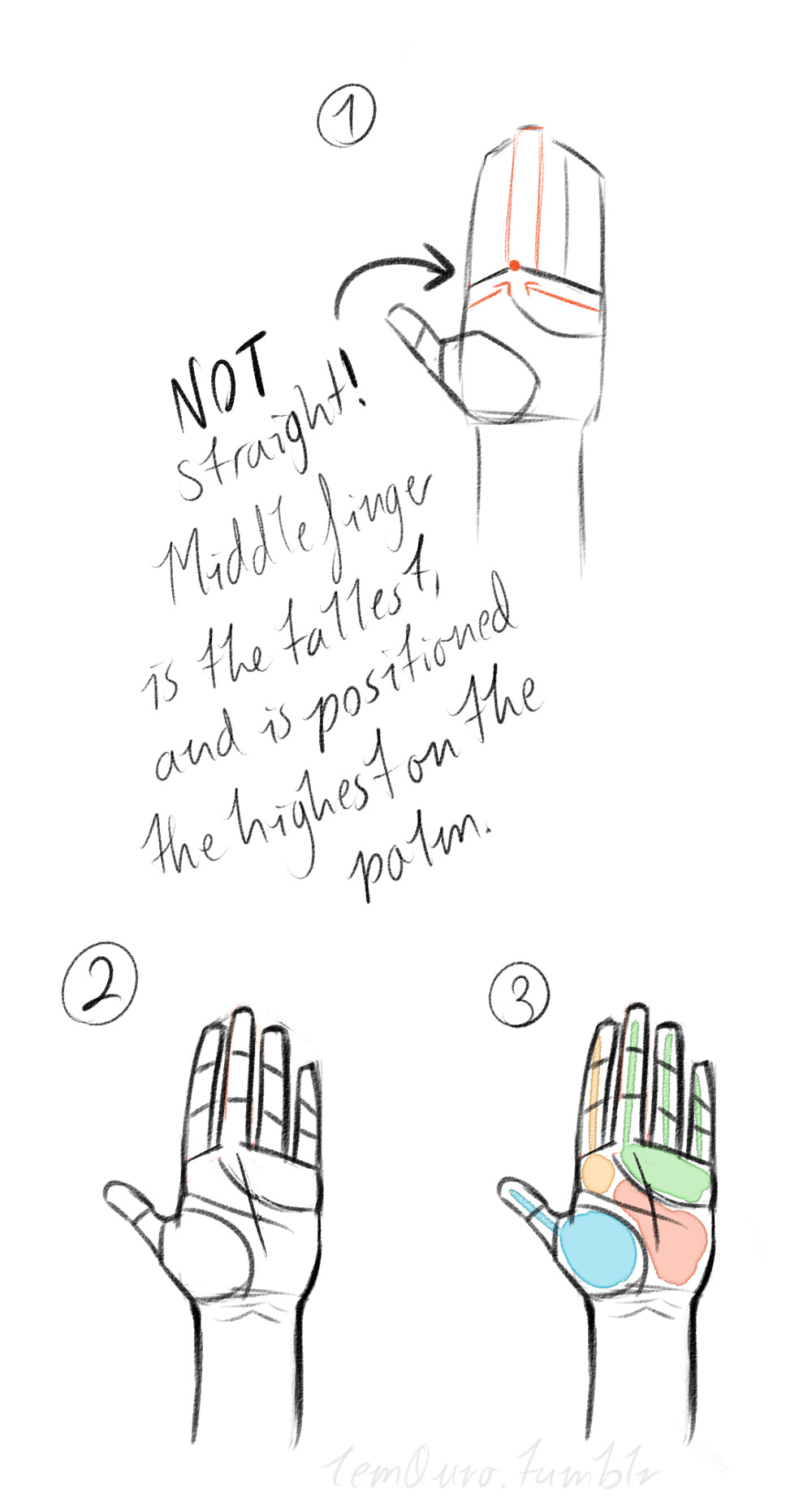

When the hand moves, parts A, B, or C of the palm, alone or in different combos, will create the general poses that the hands do normally. These parts are the parts that move, with D being stationary, no matter what!
Here’s a chart of all the possible combos. Once you have down what part of the hand moves for a certain pose, you can change up the fingers and tweak it a bit to do what you need to make it more specific!
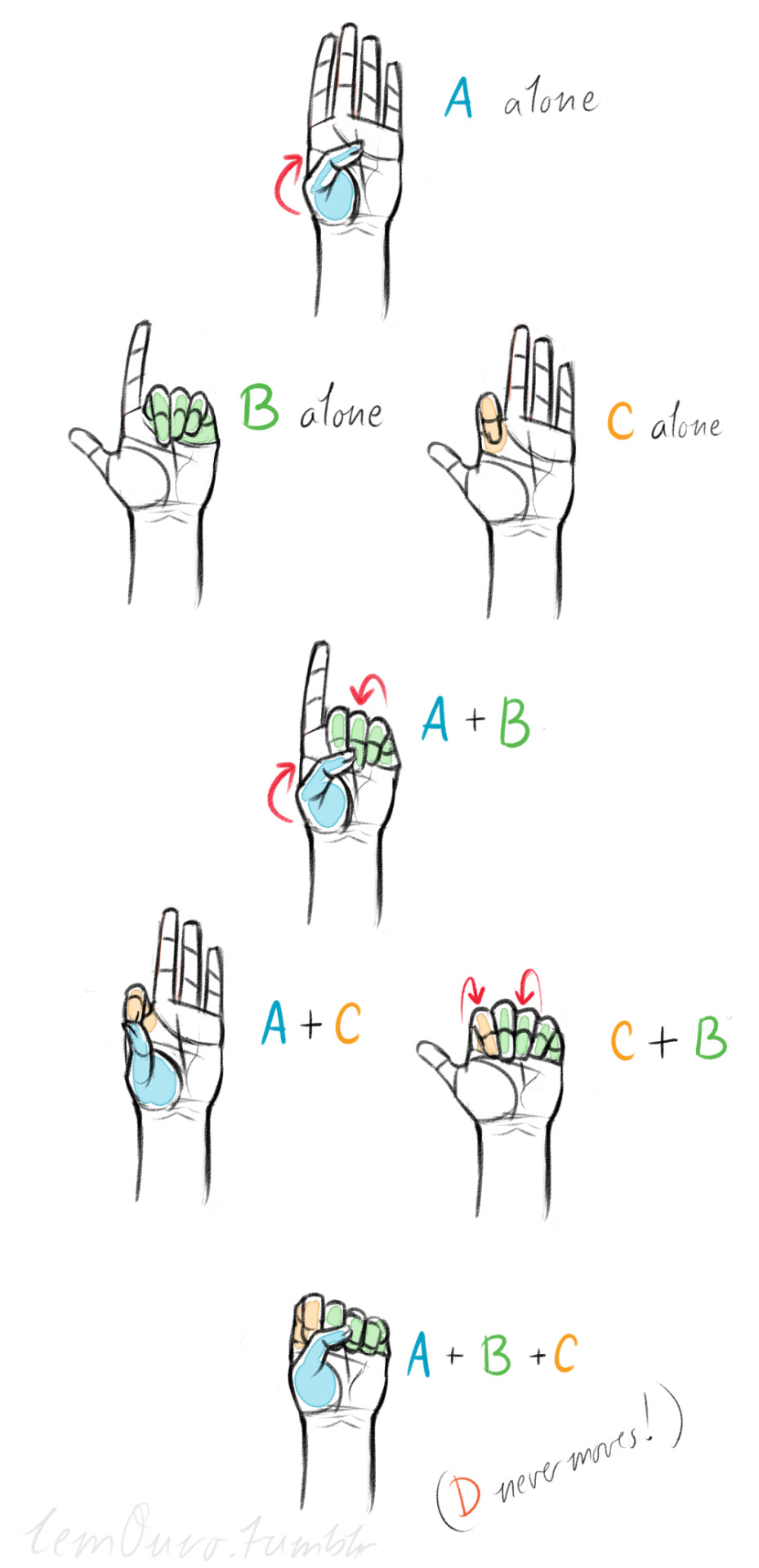
This is simply my method of drawing hands. God knows there are hundreds of tutorials out there by other artists, but personally, this way helps me the best (after learning the anatomy first).
This way I can divide the hand and combine the parts in any such way I need!
Hands take a lot of effort to grapple, and you need to practice them a lot, especially foreshortening of the hand; that’s really something you need to learn through your own studies. Look at your own hands, draw hands from life, from magazines, shows, comics; just draw hands! You’ll eventually figure out a method that works best for you. So to get better at drawing hands; draw hands!! And don’t stress over it, have fun with it!

61K notes
·
View notes
Photo
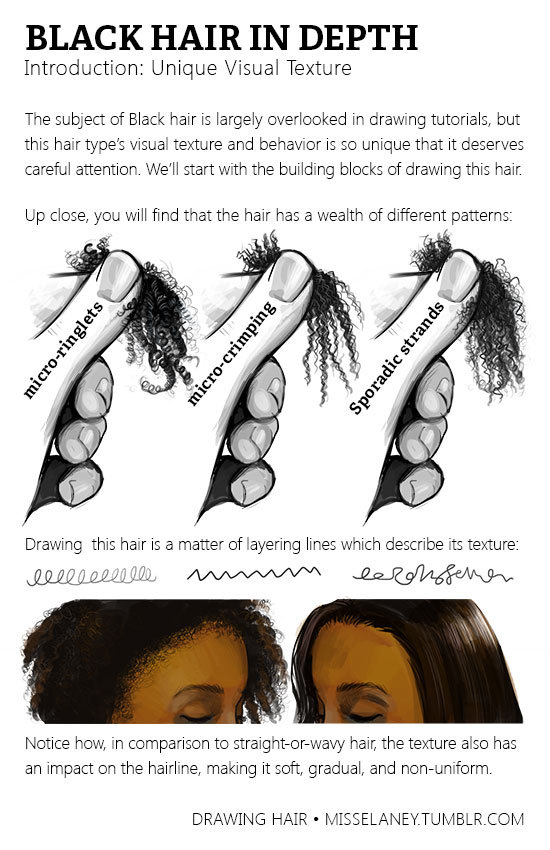
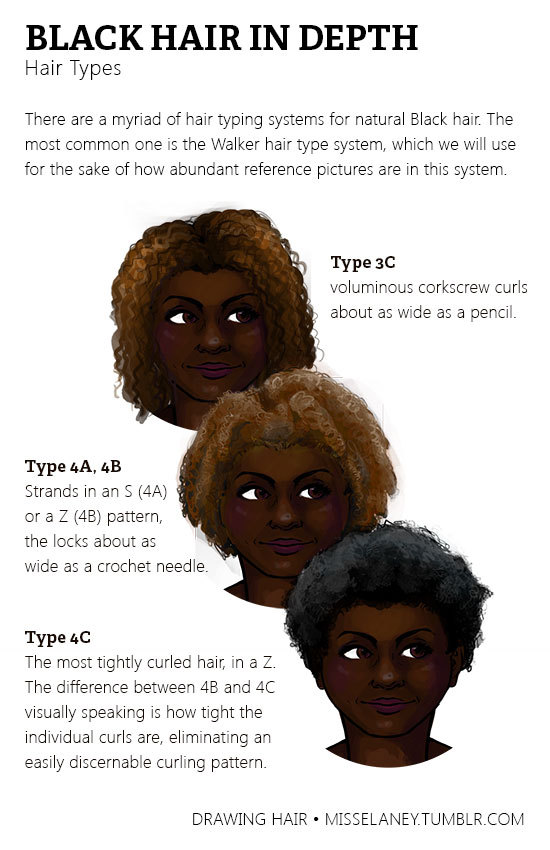

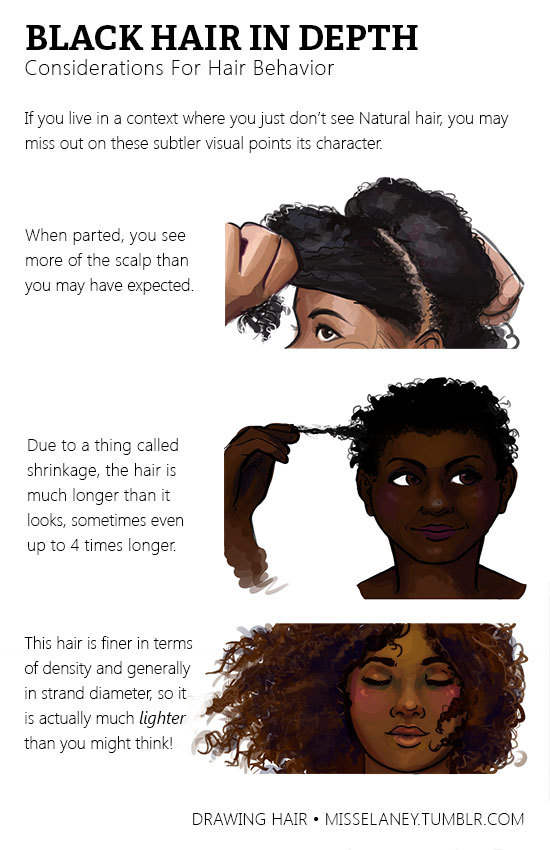


Natural Black Hair Tutorial! Usually Black hair is excluded in the hair tutorials which I have seen so I have gone through it in depth because it’s really not enough to tell someone simply, “Black hair is really curly, draw it really curly.“
The next part of Black Hair In Depth will feature styles and ideas for designing characters and I will release it around February. If you would like to see certain styles, please shoot me a message!
[Patreon]
271K notes
·
View notes
Text
Alternatives for 25 overused words in writing
1. Interesting- note worthy; thought-provoking; fascinating; attracting; appealing; attention-grabbing; captivating; gripping; invigorating; engrossing; engaging; electrifying.
2. Beautiful- striking; stunning; magnificent; lovely; charming; gorgeous; radiant; dazzling.
3. Good- acceptable, wonderful, exceptional; positive; brilliant; first-rate; notable; stellar; favorable; superb; marvellous; prime.
4. Bad- awful; lousy; poor; unacceptable; crummy; dreadful; rough; inferior; substandard; atrocious; appalling; dreadful; defective.
5. Look- glance; fixate; observe; stare; gaze; peer; scan; watch; study; browse; eye; glimpse; review; inspect.
6. Nice- lovely; superior; pleasant; satisfying; delightful; likeable; agreeable; correct; adequate; swell; fair; okay; approved.
7. Very- extremely; exceedingly; exceptionally; immensely; tremendously; abundantly; particularly; remarkably.
8. Fine- satisfactory; worthy; respectable; exquisite; suitable; well; imposing; decent; admirable; praise-worthy; decent.
9. Happy- cheerful; delighted; pleased; content; amused; thrilled; elated; thrilled; ecstatic; on cloud 9.
10. Really- genuinely; truly; honestly; actually; undoubtedly; certainly; remarkably; incredibly; downright; unquestionably; extremely.
11. Sad- miserable; gloomy; devastated; down at heard; distraught; distressed; dispirited; sorrowful; downcast; feeling blue; desolate.
12. Big- massive; huge; giant; gigantic; enormous; large; colossal; immense; bulky; tremendous; hefty; sizable; extensive; great; substantial.
13. Shocked- taken aback; lost for words; flabbergasted; staggered; outraged; astonished; astounded; stunned; speechless; appalled.
14. Small- tiny; petite; mini; miniature; microscopic; minuscule; compact; pocket-sized; cramped; puny; undersized; limited; meager; modest; minute; pint-sized.
15. Angry- irate; enraged; touchy; cross; resentful; indignant; infuriated; wound-up; worked-up; seething; raging; heated; bitter; bad-tempered; offended; frustrated.
16. Know- understand; comprehend; realize; learn; perceive; recognize; grasp; sense.
17. Change- alter; transform; replace; diversify; adjust; adapt; modify; remodel; vary; evolve; transfigure; redesign; refashion; advance; transition; shift; adjustment.
18. Old- aged; ancient; matured; elderly; senior; veteran; decrepit; seasoned; venerable; past one’s prime; doddering; senile.
19. Think- ponder; reflect; conceive; imagine; contemplate; consider; determine; realize; visualize; guess/assume; conclude; envision.
20. Funny- comical; ludicrous; amusing; droll; entertaining; absurd; hilarious; silly; whimsical; hysterical; joking; witty; facetious; slapstick; side-splitting; knee-slapping.
21. Go- move; proceed; advance; progress; travel; walk; journey; depart; exit; flee; make one’s way; clear out; get underway.
22. Give- grant; donate; hand-out; present; provide; deliver; hand over; offer; award; bestow; supply with; contribute to; send; entrust.
23. Get- acquire; obtain; receive; gain; earn; gather; collect; buy; purchase; attain; score; secure; take possession of; grab.
24. Easy- effortless; simple; clear; smooth; straightforward; uncomplicated; painless; accessible; apparent; basic; plain; child’s play; facile; elementary; cinch.
25. Fast- agile; brisk; rapid; nimble; swift; accelerated; fleeting; high-speed; active; dashing; winged; hurried; turbo.
133K notes
·
View notes
Photo

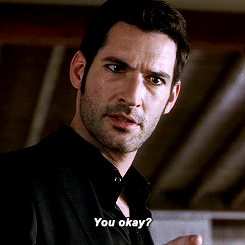
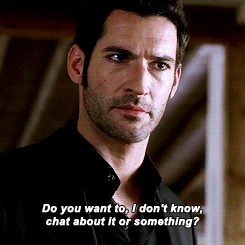

4K notes
·
View notes

